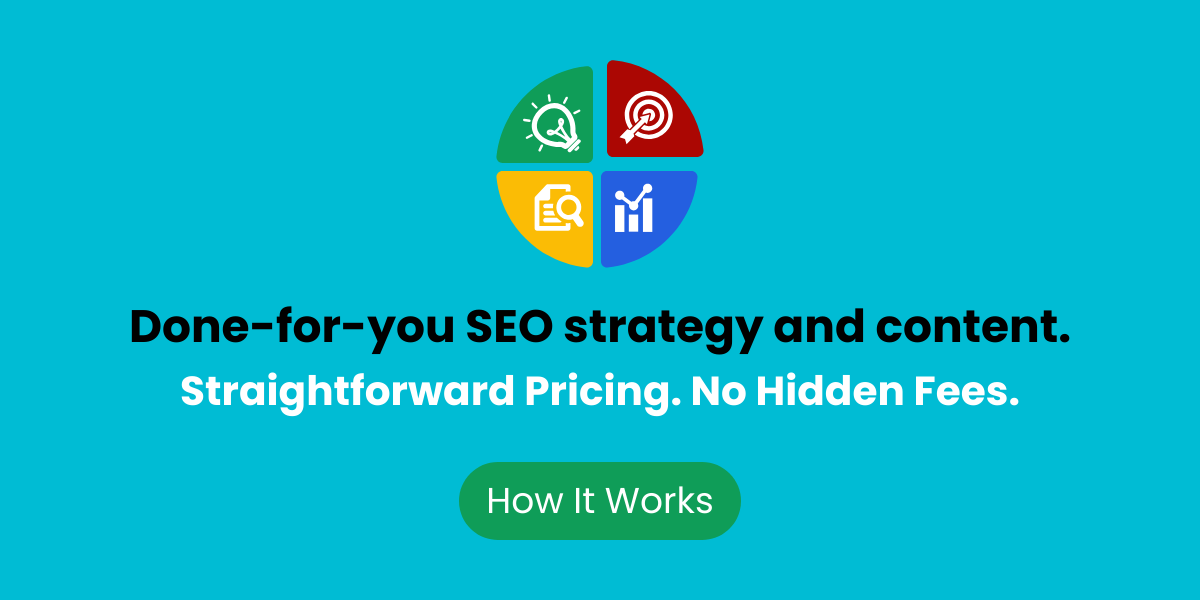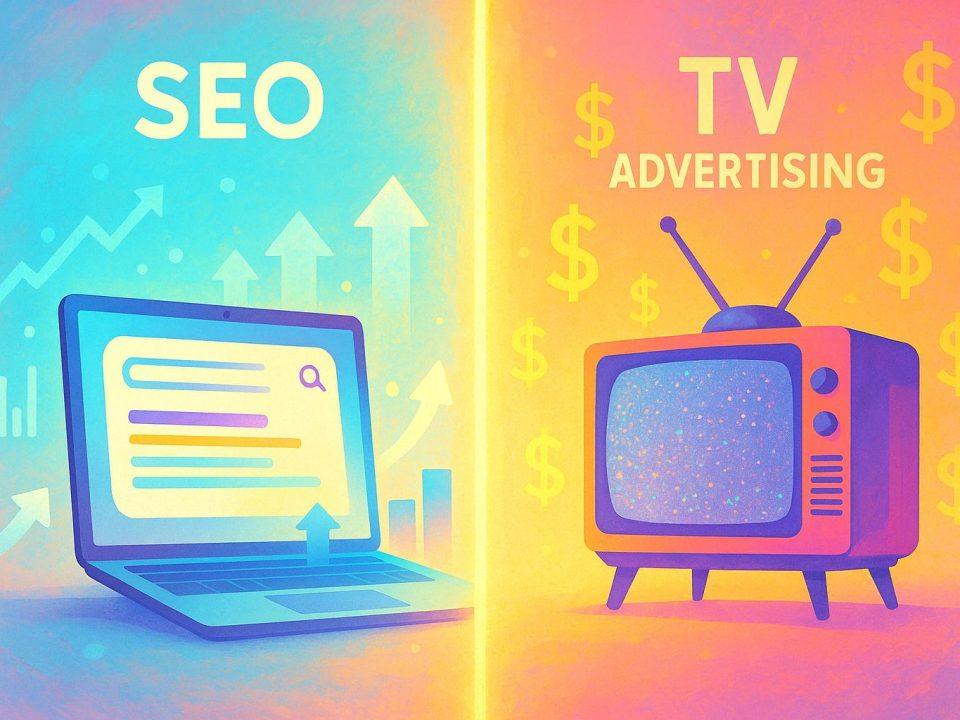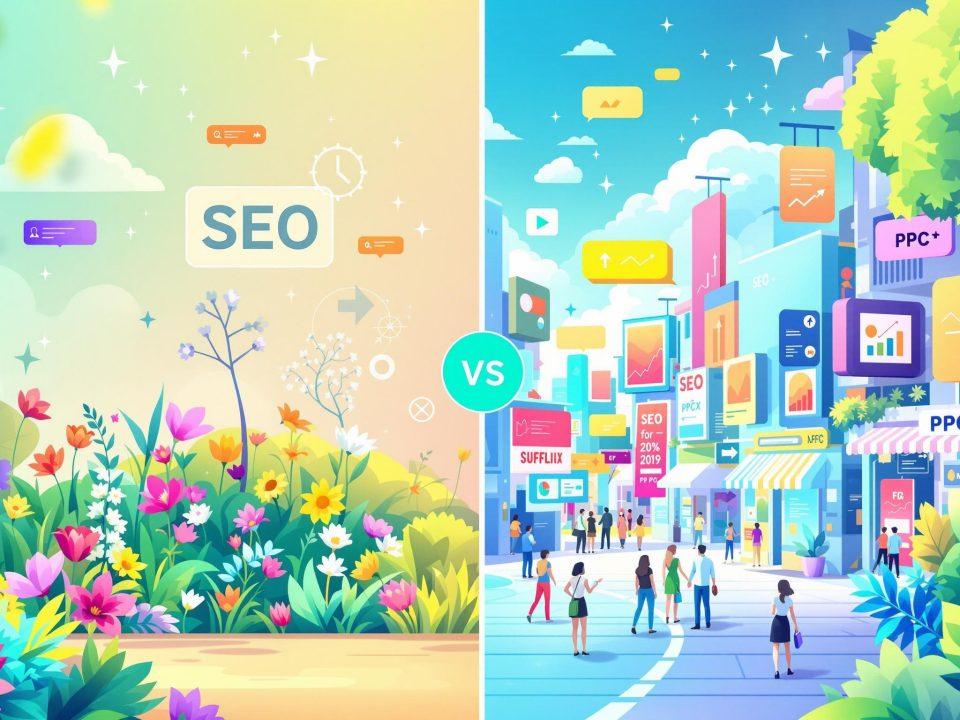I’ve been in the SEO and content writing game for a while now, and let me tell you, an effective SEO content strategy is non-negotiable. It’s the foundation of any successful online presence. Without it, you’re just throwing spaghetti at the wall and hoping something sticks.
But here’s the thing: creating an effective SEO content strategy isn’t rocket science. It’s about understanding your audience, knowing your keywords, and crafting content that both humans and search engines will love. And that’s exactly what we’re going to talk about today.
Table Of Contents:
- What Is SEO Content Strategy?
- Benefits of Implementing an SEO Content Strategy
- Key Elements of a Successful SEO Content Strategy
- How to Develop an Effective SEO Content Strategy
- Tools and Resources for SEO Content Strategy
- Best Practices for Creating SEO-Friendly Content
- Measuring the Success of Your SEO Content Strategy
- Common Mistakes to Avoid in SEO Content Strategy
- The Future of SEO Content Strategy
- Conclusion
What Is SEO Content Strategy?
SEO content strategy is the secret sauce that can skyrocket your website to the top of Google’s search results. It’s a powerful combination of well-researched keywords, captivating content, and a deep understanding of what your target audience is searching for.
Think of it like a treasure map, guiding potential customers straight to your website. By creating content that aligns with your audience’s needs and optimizing it for search engines, you can attract a steady stream of organic traffic and establish your brand as an authority in your industry.
I’ve seen firsthand how a solid SEO content strategy can transform a website from a ghost town to a thriving hub of engagement and conversions. It’s not just about stuffing your pages with keywords; it’s about crafting valuable, relevant content that resonates with your readers and keeps them coming back for more.
Benefits of Implementing an SEO Content Strategy
Imagine waking up to a flood of organic traffic pouring into your website, all thanks to your killer SEO content strategy. That’s the power of targeting the right keywords and creating content that your audience can’t resist.
By understanding your target audience’s search intent and crafting content that meets their needs, you can attract qualified leads who are more likely to convert into loyal customers. Plus, by consistently delivering high-quality, valuable content, you’ll build trust and credibility with your audience, establishing your brand as a go-to resource in your industry.
The benefits of an effective SEO content strategy are endless. From boosting your search engine rankings to driving more organic traffic, to improving user experience and increasing conversions, a well-executed plan can take your online presence to new heights. I’ve witnessed businesses double, triple, and even quadruple their monthly organic traffic by investing in a solid content marketing strategy that puts their audience first.
Key Elements of a Successful SEO Content Strategy
Creating a winning SEO content strategy is like baking a cake – you need the right ingredients in the perfect proportions. Miss one key element, and your content falls flat. But when you nail the recipe, the results are sweet.
Keyword Research
The foundation of any successful SEO content strategy is thorough keyword research. It’s all about understanding what your target audience is searching for and identifying the keywords that will bring them straight to your virtual doorstep.
By using tools like Ahrefs Keywords Explorer or Google Keyword Planner, you can uncover high-volume, low-competition keywords that are ripe for the taking. These golden nuggets will inform your content creation and help you attract a steady stream of qualified traffic.
Content Ideation
With your target keywords in hand, it’s time to let your creativity run wild. Content ideation is all about brainstorming fresh, engaging topics that will captivate your audience and keep them coming back for more.
I like to start by putting myself in my readers’ shoes. What questions are they asking? What problems are they trying to solve? By understanding their pain points and interests, I can craft content that speaks directly to their needs and positions my brand as a trusted resource.
Content Creation
Now comes the fun part – bringing your ideas to life through compelling, well-written content. Whether you’re crafting blog posts, videos, infographics, or podcasts, the key is to create valuable, informative content that showcases your expertise and engages your audience.
I always aim to write in a conversational, relatable tone that makes my readers feel like I’m speaking directly to them. By breaking down complex topics into easily digestible nuggets and using real-life examples, I can create content that resonates with my audience and keeps them engaged from start to finish.
Content Optimization
Creating killer content is only half the battle. To truly succeed with SEO, you need to optimize your content for both search engines and human readers. That means incorporating your target keywords naturally throughout your content, using descriptive headers and subheaders, and ensuring your content is easy to read and navigate.
I also like to include internal links to other relevant pages on my site, as well as external links to high-quality sources that support my points. By creating a web of interconnected, authoritative content, I can signal to search engines that my site is a valuable resource worthy of high rankings.
Content Promotion
You’ve poured your heart and soul into creating amazing content, but if no one sees it, does it even matter? That’s where content promotion comes in. By actively sharing your content through social media, email marketing, and other channels, you can expand your reach and attract new audiences to your site.
I’ve found that building relationships with influencers and thought leaders in my industry can also be a powerful way to amplify my content’s reach. By guest posting on their blogs or collaborating on joint projects, I can tap into their established audiences and introduce my brand to a whole new group of potential customers.
How to Develop an Effective SEO Content Strategy
Developing an effective SEO content strategy is like planning a road trip. You need a clear destination in mind, a map to guide you, and a solid plan for how you’ll reach your goals. Here’s how I approach it:
Define Your Target Audience
Before you start creating content, you need to know who you’re creating it for. Take the time to research your target audience’s demographics, interests, pain points, and online behavior. By understanding what makes them tick, you can create content that resonates with their needs and keeps them engaged.
Conduct Keyword Research
With your target audience in mind, it’s time to dive into keyword research. Use tools like Ahrefs Keywords Explorer or Google Keyword Planner to identify the keywords your audience is searching for. Look for keywords with high search volume and low competition, and prioritize those that align with your business goals.
Analyze Competitors
To create content that stands out from the crowd, you need to know what your competitors are up to. Analyze their top-performing content to identify gaps in the market and opportunities to differentiate your brand. Use tools like SEMrush or Ahrefs Site Explorer to spy on their keyword rankings and backlink profiles.
Create a Content Calendar
With your target keywords and competitive insights in hand, it’s time to plan your content creation. Develop a content calendar that maps out your topics, formats, and publishing schedule. Be sure to include a mix of evergreen content that will continue to drive traffic over time, as well as timely pieces that capitalize on current events or trends.
Optimize for Search Engines
As you create your content, keep search engine optimization top of mind. Use your target keywords naturally throughout your content, and include them in your headlines, subheaders, and meta descriptions. Ensure your content is easy to read and navigate, with short paragraphs, bullet points, and plenty of white space.
Measure and Refine
Finally, don’t forget to track your content’s performance and adjust your strategy as needed. Use tools like Google Analytics to monitor your traffic, engagement, and conversion rates, and use that data to inform your future content creation. Continuously test and refine your approach to ensure you’re delivering the best possible results for your business.
Types of SEO Content Strategy
When it comes to shaping your SEO content game, it really depends on what your business is all about. Running a cozy clothing shop in town? Then you’ll want to dive into creating a local SEO content strategy to get the word out. Or if you’re in the biz of serving other businesses, rolling up your sleeves for a serious B2B SEO content strategy is where it’s at.
Tools and Resources for SEO Content Strategy
Crafting a winning SEO content strategy is a lot easier when you have the right tools in your arsenal. Here are a few of my go-to resources:
- Ahrefs: This all-in-one SEO toolset is a must-have for keyword research, competitor analysis, and content ideation. Its Content Explorer feature is a goldmine for finding top-performing content in your niche.
- SEMrush: Another powerful SEO tool, SEMrush offers keyword research, site audits, and content optimization features to help you create content that ranks.
- Answer the Public: This free tool generates a list of questions and topics related to your target keyword, making it a great resource for content ideation.
- Canva: Creating visually stunning content is a breeze with Canva’s user-friendly design tools and templates.
- WordPress: This popular content management system makes it easy to create and optimize your website’s content for search engines. Plus, there are plenty of SEO plugins available to help you fine-tune your strategy.
Of course, these are just a few of the many tools and resources available to help you succeed with SEO content marketing. The key is to experiment with different options and find the ones that work best for your unique needs and goals.
At the end of the day, creating a successful SEO content strategy is all about putting your audience first and delivering value at every turn. By staying focused on your readers’ needs and continuously refining your approach, you can create content that not only ranks well in search engines but also builds lasting relationships with your customers.
Best Practices for Creating SEO-Friendly Content
Creating quality content is the foundation of any successful SEO strategy. But what exactly does that entail? How do you craft blog posts that not only engage your audience but also rank high on search engines?
It all starts with understanding user intent. What are people really looking for when they type in a query? Address their pain points, answer their questions, and provide genuine value. That’s the secret sauce.
Focus on User Intent
I’ve learned the hard way that you can’t just stuff keywords into a post and call it a day. Google’s gotten too smart for that. It’s all about understanding the user’s intent behind the search and crafting content that directly addresses that need.
For example, if someone’s searching for “best practices for SEO content,” they’re likely looking for actionable tips and strategies. So, that’s exactly what I aim to deliver in this post – no fluff, just real, hands-on advice from my years in the trenches.
Optimize Headlines and Meta Descriptions
Your headline is your first impression. It’s what entices people to click through from the search results. So, make it count. Include your target keyword, but more importantly, make it irresistible. Use power words, evoke emotion, and promise value.
The same goes for your meta description. This is your chance to expand on your headline and give searchers a taste of what’s in store. Again, include your keyword naturally, but focus on writing a compelling, click-worthy description.
Use Internal Linking
Internal linking is one of the most underrated SEO tactics, in my opinion. By linking to other relevant pages on your site, you help search engines understand your site structure and distribute link equity.
But more than that, internal links help keep readers on your site longer. If they finish one article and see a link to another interesting post, they’re more likely to click through and keep engaging with your content.
Incorporate Visuals
No one wants to read a wall of text. Visuals help break up your content, making it more digestible and engaging. Plus, they provide additional opportunities for optimization.
Always include alt text that describes the image and incorporates your target keyword if relevant. This helps search engines understand the context of the visual. And don’t forget about file names. Instead of “IMG_123.jpg,” use descriptive names like “seo-content-best-practices.jpg.”
Update and Repurpose Content
Your work isn’t done once you hit publish. The most successful content strategies involve regularly updating and repurposing existing content. I make it a point to revisit old posts every few months to check for outdated information, broken links, or new opportunities to expand on the topic.
You can also breathe new life into old content by repurposing it into different formats. Turn a blog post into a video, an infographic, or a podcast episode. This helps you reach new audiences and get more mileage out of your existing content.
Measuring the Success of Your SEO Content Strategy
Creating killer content is only half the battle. To really succeed with SEO, you need to track and measure your results. How else will you know what’s working and what’s not?
I rely on a few key metrics to gauge the success of my content strategy. First and foremost, I look at how my content ranks for target keywords. Are we moving up the SERP? Holding steady in a top position? Or (gulp) slipping down the ranks?
Track Keyword Rankings
Keyword rankings are the bread and butter of SEO. If your content isn’t ranking, it’s not getting found. Period. I use tools like Ahrefs to track my target keywords and monitor any changes in position over time.
It’s important to remember that rankings can fluctuate, especially in the short term. Don’t panic over small drops. Instead, look for overall trends. Are you generally moving in the right direction? Great. If not, it’s time to dig deeper and see what needs adjusting.
Monitor Organic Traffic
Rankings are great, but what really matters is organic traffic. After all, what’s the point of ranking if no one’s actually clicking through to your site?
I keep a close eye on my organic traffic numbers, both overall and for individual pieces of content. If a post starts bringing in a steady stream of visitors from search, I know I’m on the right track. If traffic’s stagnant or declining, it’s time for a content update.
Analyze Engagement Metrics
Traffic’s just the tip of the iceberg. To really gauge the success of your content, you need to look at engagement metrics like time on page, bounce rate, and pages per session.
If people are sticking around to read your entire post, that’s a good sign. If they’re bouncing off the page after a few seconds, that’s a red flag. Similarly, if visitors are exploring multiple pages on your site, that indicates your content’s resonating and encouraging further engagement.
Identify Top-Performing Content
Finally, I always keep an eye out for my top-performing posts. Which pieces of content are consistently bringing in the most traffic, rankings, and engagement?
Once I identify those winners, I double down. I update them regularly, build internal links to them, and promote the heck out of them. These are the posts that have the potential to become cornerstone content – the kind of stuff that establishes your authority and drives serious results.
Common Mistakes to Avoid in SEO Content Strategy
I’ve been around the block a few times when it comes to SEO, and I’ve seen my fair share of mistakes. Some of them I’ve even made myself. But hey, that’s how we learn and grow, right?
To save you some of the headaches I’ve endured, here are a few common pitfalls to avoid in your SEO content strategy:
Neglecting Keyword Research
I get it – keyword research can be tedious. But skipping this crucial step is a surefire way to sabotage your content’s success. How can you expect to rank if you don’t know what people are actually searching for?
Take the time to dig into the data. Use tools like Ahrefs Keywords Explorer to uncover valuable keyword opportunities. Look for phrases with decent search volume and relatively low competition. Those are your sweet spots.
Prioritizing Quantity Over Quality
In the early days of SEO, it was all about pumping out as much content as possible. The more pages you had, the better your chances of ranking. But those days are long gone.
Now, it’s all about quality over quantity. Google’s algorithms are sophisticated enough to recognize and reward higher content quality. So, don’t churn out mediocre posts just for the sake of hitting a certain word count or publishing frequency. Take the time to create truly excellent content, even if that means publishing less often.
Ignoring User Experience
SEO isn’t just about pleasing search engines. Ultimately, it’s about providing a great experience for your human readers. If your content’s hard to read, navigate, or engage with, people will bounce – no matter how well it ranks.
Make sure your site’s design is clean, mobile-friendly, and easy to use. Break up your content with plenty of headings, images, and white space. And always, always prioritize readability. Write in a clear, conversational tone and avoid jargon or overly complex language.
Failing to Promote Content
Creating amazing content is only half the battle. If you want it to truly succeed, you need to get it in front of the right people. That means promoting your posts through social media, email marketing, guest posting, and other channels.
Don’t just rely on organic search traffic. Diversify your promotion strategy to reach new audiences and drive more engagement. The more eyeballs you can get on your content, the better its chances of ranking and generating results.
Not Measuring Results
Finally, don’t forget to track and measure your content’s performance. You can’t improve what you don’t measure, right?
Keep a close eye on your rankings, traffic, engagement, and conversion metrics. Use tools like Google Analytics to get a clear picture of how your content’s performing. And don’t be afraid to experiment. Try new tactics, test different approaches, and see what moves the needle.
The Future of SEO Content Strategy
So, we’ve covered the best practices, common mistakes, and key metrics of SEO content strategy. But what about the future? What trends and technologies should we be keeping an eye on?
As someone who’s been in the game for a while, I’ve seen plenty of changes and evolutions in the world of SEO. And if there’s one thing I know for sure, it’s that the only constant is change. To stay ahead of the curve, we need to be proactive and adaptable.
Artificial Intelligence and Machine Learning
One of the biggest trends I see shaping the future of SEO is the rise of artificial intelligence and machine learning. Google’s already using these technologies to power its algorithms and deliver more relevant, personalized search results.
As content creators, we need to be thinking about how we can leverage AI and ML to improve our own strategies. That might mean using optimization tools to improve our content for semantic search, or experimenting with AI-powered chatbots to engage visitors and answer their questions.
Voice Search Optimization
Another trend that’s gaining steam is voice search. With the proliferation of smart speakers and virtual assistants like Siri and Alexa, more and more people are using their voices to search the web.
To optimize for voice search, we need to focus on conversational, long-tail keywords and natural language queries. We also need to make sure our content’s structured in a way that’s easy for virtual assistants to parse and understand, using techniques like schema markup and featured snippets.
Interactive and Visual Content
As attention spans continue to shrink and competition for eyeballs heats up, interactive and visual content’s becoming increasingly important. People want content that’s engaging, immersive, and easy to consume.
That means experimenting with formats like quizzes, polls, games, and interactive infographics. It also means doubling down on visual storytelling through videos, images, and other multimedia elements. The more we can make our content feel like an experience rather than just words on a page, the better.
Personalization and User Experience
Finally, I believe the future of SEO strategy lies in personalization and user experience. Google’s already moving in this direction with its focus on user signals like click-through rates, bounce rates, and dwell time.
To succeed in this new landscape, we need to get to know our audiences on a deeper level. What are their pain points, preferences, and behaviors? How can we tailor our content to their specific needs and interests?
We also need to prioritize user experience at every turn. That means creating content that’s not just informative, but also engaging, accessible, and easy to navigate. It means designing our sites with mobile users in mind and optimizing for speed and performance.
The better we can align our content with the needs and expectations of our users, the more successful our SEO efforts will be – both now and in the future.
Conclusion
So there you have it, folks. The secret sauce to an effective SEO content strategy. It’s not about stuffing keywords or churning out mediocre content. It’s about understanding your audience, creating valuable, engaging content, and optimizing it for search engines.
Remember, SEO is a marathon, not a sprint. It takes time, effort, and a whole lot of patience. But trust me, when you see your rankings climb and your traffic soar, it’ll all be worth it.
Now go forth and create SEO content that’s killer. Your audience (and your search rankings) will thank you for it.











